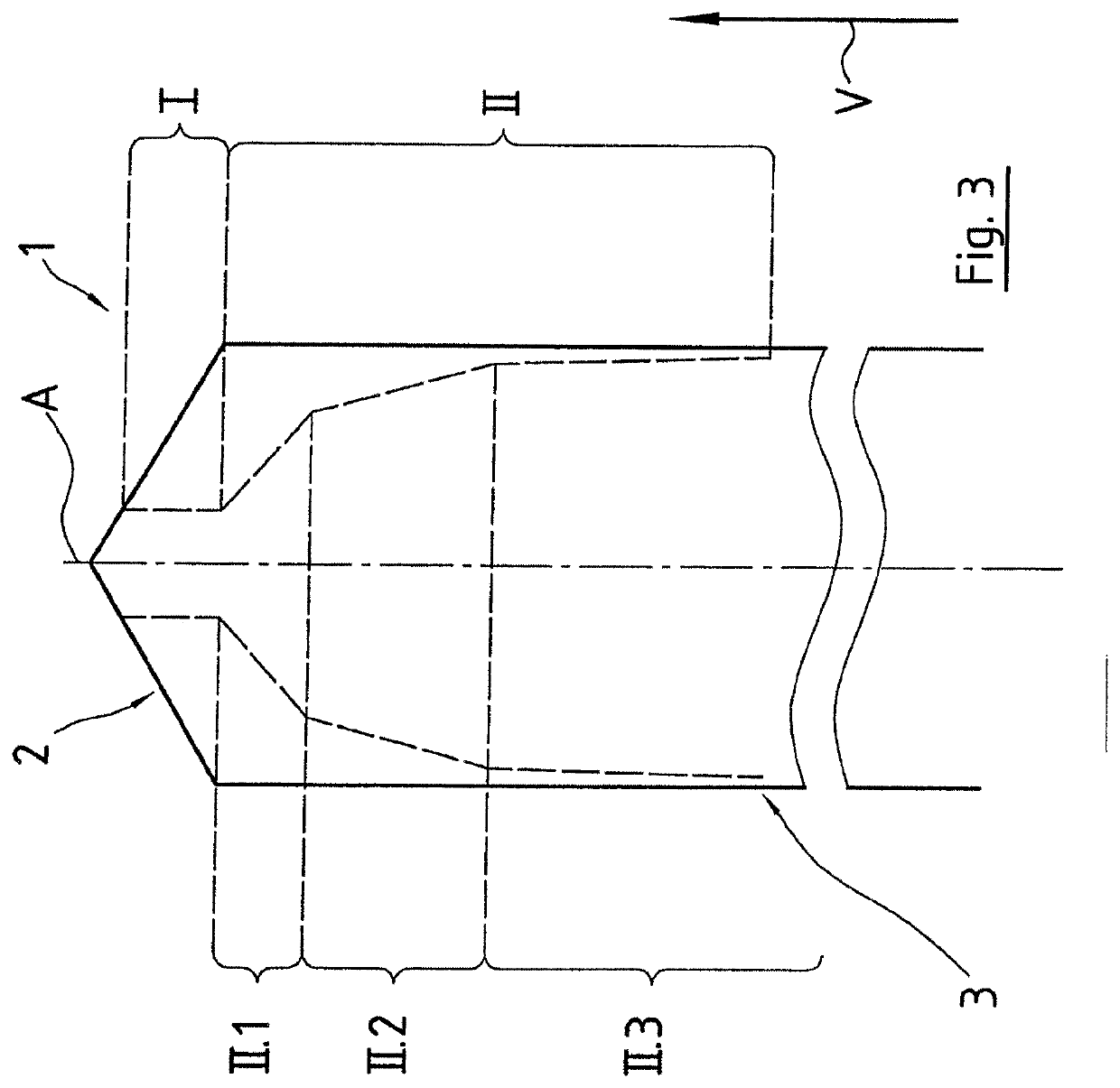Drilling tool
- Summary
- Abstract
- Description
- Claims
- Application Information
AI Technical Summary
Benefits of technology
Problems solved by technology
Method used
Image
Examples
Embodiment Construction
[0024]FIG. 1 shows a drill 1 having a tool tip 2 and a basic body 3. The drill 1 is rotated about an axis of rotation A for the purpose of drilling a workpiece. In a rotation about the axis of rotation A, the basic body 3 occupies a cylindrical volume.
[0025]The tool tip 2 is shown in a top view in FIG. 2. Going through the axis of rotation A is a chisel edge 4, which in turn merges into two main cutting edges 5, 6 of the tool tip 2. These main cutting edges 5, 6 extend outward, and then merge into the main groove 7, 8, or into the secondary cutting edges 9, 10. In the intermediate region of the main groove there are thus formed two helical depressions 11, 12, which serve as conveying helices and provide for transport of the machined-off drilling dust, or the machined-off chips, contrary to the direction of advance V. The conveying helices 11, 12 each end in the region of the point B. Up to this point, or up to this height, the depth of each also decreases. Additionally indicated, by...
PUM
 Login to View More
Login to View More Abstract
Description
Claims
Application Information
 Login to View More
Login to View More - R&D
- Intellectual Property
- Life Sciences
- Materials
- Tech Scout
- Unparalleled Data Quality
- Higher Quality Content
- 60% Fewer Hallucinations
Browse by: Latest US Patents, China's latest patents, Technical Efficacy Thesaurus, Application Domain, Technology Topic, Popular Technical Reports.
© 2025 PatSnap. All rights reserved.Legal|Privacy policy|Modern Slavery Act Transparency Statement|Sitemap|About US| Contact US: help@patsnap.com


